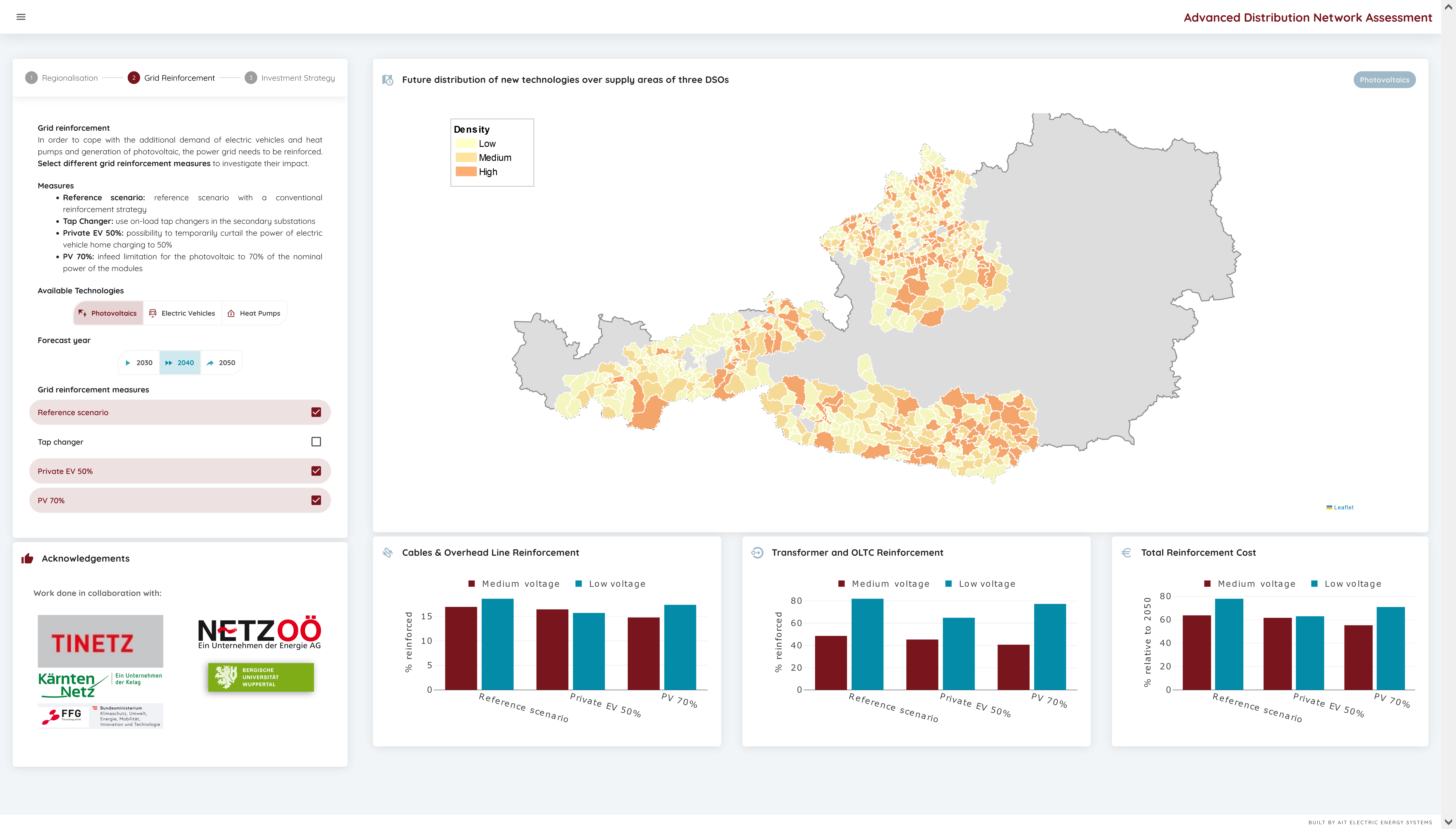Project 567
Methods and future scenarios for strategic electric grid network development in the distribution levels 5,6,7
Background
The comprehensive rollout of distributed generation and the advancing electrification of the demand side are expected to significantly increase the load and generation on the distribution grids over the next thirty years. This increase will require a corresponding comprehensive reinforcement of the distribution grids. Getting a grasp of grid expansion needs and the effectiveness of different measures helps both distribution system operators and policy makers.
Objective
The purpose of the project is to provide a method for the quantitative survey of the future medium- and long-term network expansion requirements and the effectiveness of different reinforcement measures in the medium- and low-voltage network infrastructure of a distribution network operator. The analysis is based on various scientifically developed consumption and generation rollout scenarios in consideration of various network expansion measures.
Scope
This was the first time a method was developed to serve as a potential toolkit and database for strategic grid development planning . Following are components of the project research and execution:
- Comprehensive forecast of the future development or rollout of relevant technologies in the distribution grids. This included, above all, distributed generation (especially photovoltaics), essential electrical consumers (especially electromobility and heat pumps), as well as storage systems.
- Detailed survey of the medium- and long-term grid reinforcement requirements in the medium- and low-voltage grid infrastructure of different distribution grid operators with the defined future rollout scenarios based on comprehensive, area-wide grid simulations.
- Definition and technical analysis of various strategies for upgrading the distribution networks in order to cope with the expected demand and generation increase. This includes measures such as line reinforcements, new station construction, reactive and active power controls at distributed facilities, current compounding, use of on-load tap changers, increasing of the system voltages, and other measures.
Method
This is the first time an analysis has been done with this level of detail including all low and medium voltage grids of distribution system operators. The method is built upon data collection down to the low voltage grid node level, development of detailed future rollout scenarios, modeling and measuring the effectiveness of a catalogue of measures on entire supply areas.
Project results
The project provides a comprehensive statement on the future grid expansion needs, as well as the effectiveness of the different measures to reinforce the grids. The results are made available to participating network operators in the form of detailed reports; network operators use them as a basis to develop corresponding planning foundation and strategic network development.
From this, grid operators and policy makers can derive essential requirements for the investments needs into the distribution grids due to the energy transition, but also planning bases, and the impact and comparison of different strategies and measures.
Project Setup
The project was carried out jointly with several distribution system operators as an industry project (Collective Research), in order to identify synergies in the preparation of future forecasts and measures for the upgrading of the networks during the initial preparation of such strategic network development plans.





